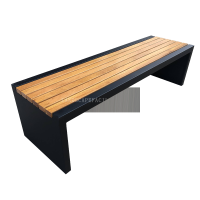Welcome to the website for landscape facilities products and knowledge.
How do landscape chairs perform in terms of resistance to mold, mildew, and bacterial growth?
Landscape chairs are designed to withstand outdoor conditions, including exposure to moisture, which can lead to mold, mildew, and bacterial growth. Their performance in resisting these issues depends largely on the materials used and proper maintenance.
Materials Matter:
High-quality landscape chairs are often made from mold-resistant materials like polypropylene, teak, or powder-coated aluminum. These materials are naturally resistant to moisture absorption, reducing the risk of microbial growth. Some synthetic fabrics, such as solution-dyed acrylic, also repel water and inhibit mildew formation.
Design and Construction:
Many landscape chairs feature breathable designs or slatted surfaces that allow air circulation, preventing stagnant moisture. Additionally, UV-resistant coatings and antimicrobial treatments are increasingly common, further enhancing their resistance to mold and bacteria.
Maintenance Tips:
Regular cleaning with mild soap and water can prevent buildup. For fabric chairs, removable and washable covers are ideal. Storing chairs in dry, shaded areas during prolonged wet weather also extends their lifespan.
By choosing the right materials and practicing simple upkeep, landscape chairs can remain hygienic and durable for years, even in challenging outdoor environments.
Related search:

Recommendation
Modern Stainless Steel Begonia Wood Park Chair Outdoor Courtyard Leisure Sun Protection Bench Long Seat